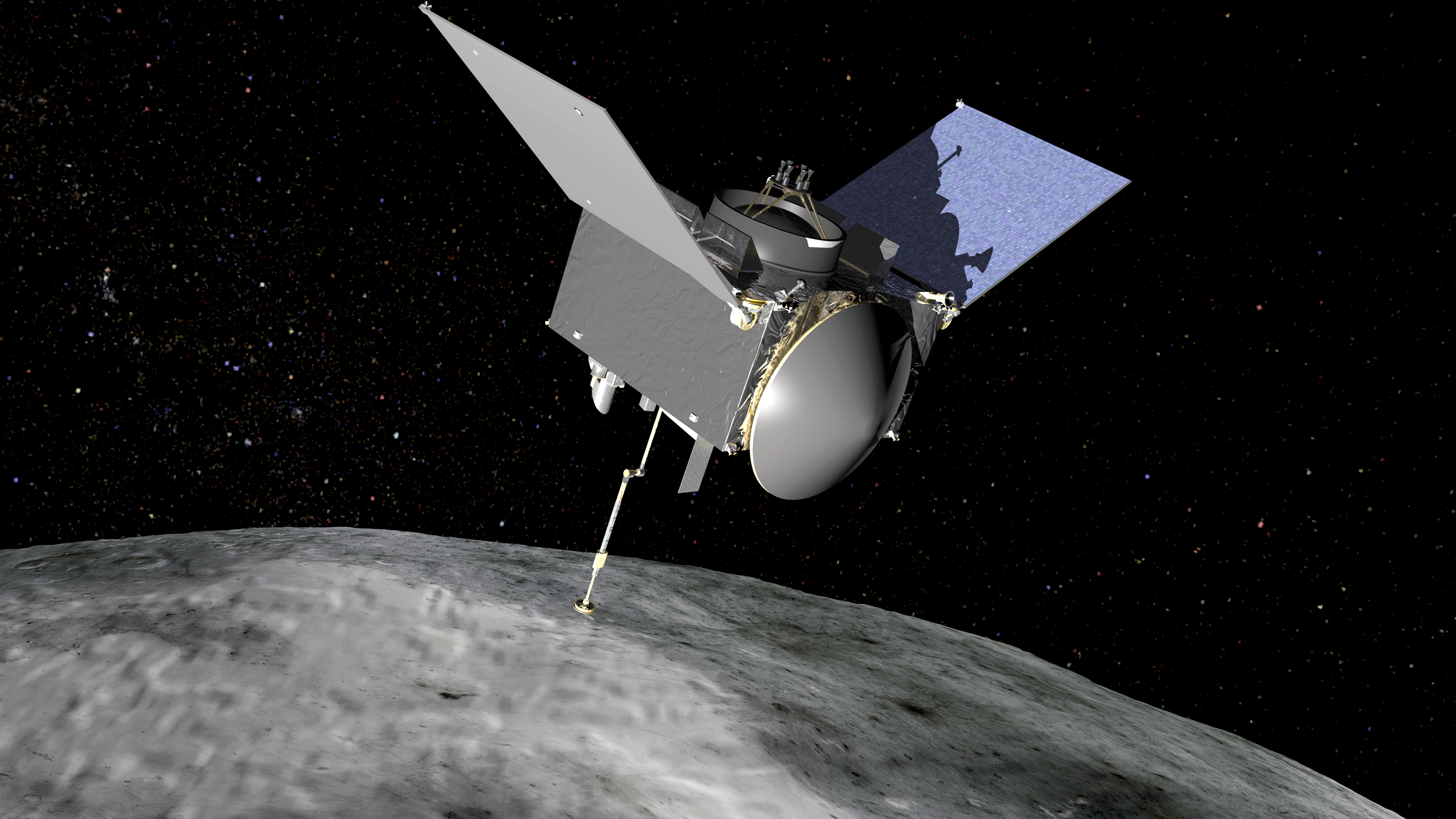Two exciting space travel updates from the 8th of September - nicely timed to coincide with Star Trek's big anniversary.
NASA has successfully launched its latest spacecraft and begun the OSIRIS-REx mission. In a spectacular triumph for contrived acronyms, the Origins, Spectral Interpretation, Resource Identification, Security, Regolith Explorer is now underway. The eponymous spacecraft is an unmanned robotic probe, which was launched via an Atlas V rocket from Cape Canaveral, will journey to the near-Earth Apollo asteroid Bennu, with which it is expected to rendezvous in 2018. Once there, it will begin 500 days of surface charting and ultimately will extend a robotic limb to begin sampling the asteroid's material. OSIRIS-REx is programmed to finally return to Earth in 2023.
Bennu is a carbonaceous asteroid that was chosen for its proximity to Earth at present. A primordial object, the materials gathered from the asteroid should shed light on the makeup of the Solar Sytem during its initial formation, almsot five billion years ago. The organic nature of the asteroid should help indicate how the early ingredients of life came to arrive on the primeval Earth. This is the third of NASA's New Frontiers programme, following Juno (currently in Jovian orbit) and New Horizons (speeding towrds the Kuiper Belt).
Bennu was named by a young lad named Michael Puzio, who won out over about eight thousands entrants in a "Name That Asteroid!" competition run by the University of Arizona and the Planetary Society. Bennu was a solar deity in early Egyptian mythology, a phoenix-heron that renewed itself in fire. A fine name for an inner-system asteroid. OSIRIS-REx, aside from the excellent acronym, was chosen because Bennu is a potential Earth impactor and Osiris was the Egyptian lord of the dead. So that's cheerful.
Shortly before OSIRIS-REx blasted off, Virgin Galactic completed their first test flight of the VSS Unity. This was the first flight undertaken by VG since the disaster that destroyed the Enterprise two years ago. Unity is the second of VG's SpaceShipTwo-class spaceplanes, launched, as with its predecessor, from the carrier vessel VMS Eve. It was expected that Unity would be named VSS Voyager, however the eventual name was chosen by Prof. Stephen Hawking. Unity was piloted by Mark Stucky and Dave Mackay, and by all accounts, it was a perfect test flight. Hopefully, Unity will do what Enterprise failed to do and make it into sub-orbital flight and become a true spacecraft.
Read about OSIRIS-REx
Read about Unity
NASA has successfully launched its latest spacecraft and begun the OSIRIS-REx mission. In a spectacular triumph for contrived acronyms, the Origins, Spectral Interpretation, Resource Identification, Security, Regolith Explorer is now underway. The eponymous spacecraft is an unmanned robotic probe, which was launched via an Atlas V rocket from Cape Canaveral, will journey to the near-Earth Apollo asteroid Bennu, with which it is expected to rendezvous in 2018. Once there, it will begin 500 days of surface charting and ultimately will extend a robotic limb to begin sampling the asteroid's material. OSIRIS-REx is programmed to finally return to Earth in 2023.
Bennu is a carbonaceous asteroid that was chosen for its proximity to Earth at present. A primordial object, the materials gathered from the asteroid should shed light on the makeup of the Solar Sytem during its initial formation, almsot five billion years ago. The organic nature of the asteroid should help indicate how the early ingredients of life came to arrive on the primeval Earth. This is the third of NASA's New Frontiers programme, following Juno (currently in Jovian orbit) and New Horizons (speeding towrds the Kuiper Belt).
 |
| Artist's interpretation of OSIRIS-REx approaching Bennu |
Bennu was named by a young lad named Michael Puzio, who won out over about eight thousands entrants in a "Name That Asteroid!" competition run by the University of Arizona and the Planetary Society. Bennu was a solar deity in early Egyptian mythology, a phoenix-heron that renewed itself in fire. A fine name for an inner-system asteroid. OSIRIS-REx, aside from the excellent acronym, was chosen because Bennu is a potential Earth impactor and Osiris was the Egyptian lord of the dead. So that's cheerful.
Shortly before OSIRIS-REx blasted off, Virgin Galactic completed their first test flight of the VSS Unity. This was the first flight undertaken by VG since the disaster that destroyed the Enterprise two years ago. Unity is the second of VG's SpaceShipTwo-class spaceplanes, launched, as with its predecessor, from the carrier vessel VMS Eve. It was expected that Unity would be named VSS Voyager, however the eventual name was chosen by Prof. Stephen Hawking. Unity was piloted by Mark Stucky and Dave Mackay, and by all accounts, it was a perfect test flight. Hopefully, Unity will do what Enterprise failed to do and make it into sub-orbital flight and become a true spacecraft.
 |
| Shot of the VSS Unity taken by the crew of the VMS Eve |
Read about OSIRIS-REx
Read about Unity
No comments:
Post a Comment